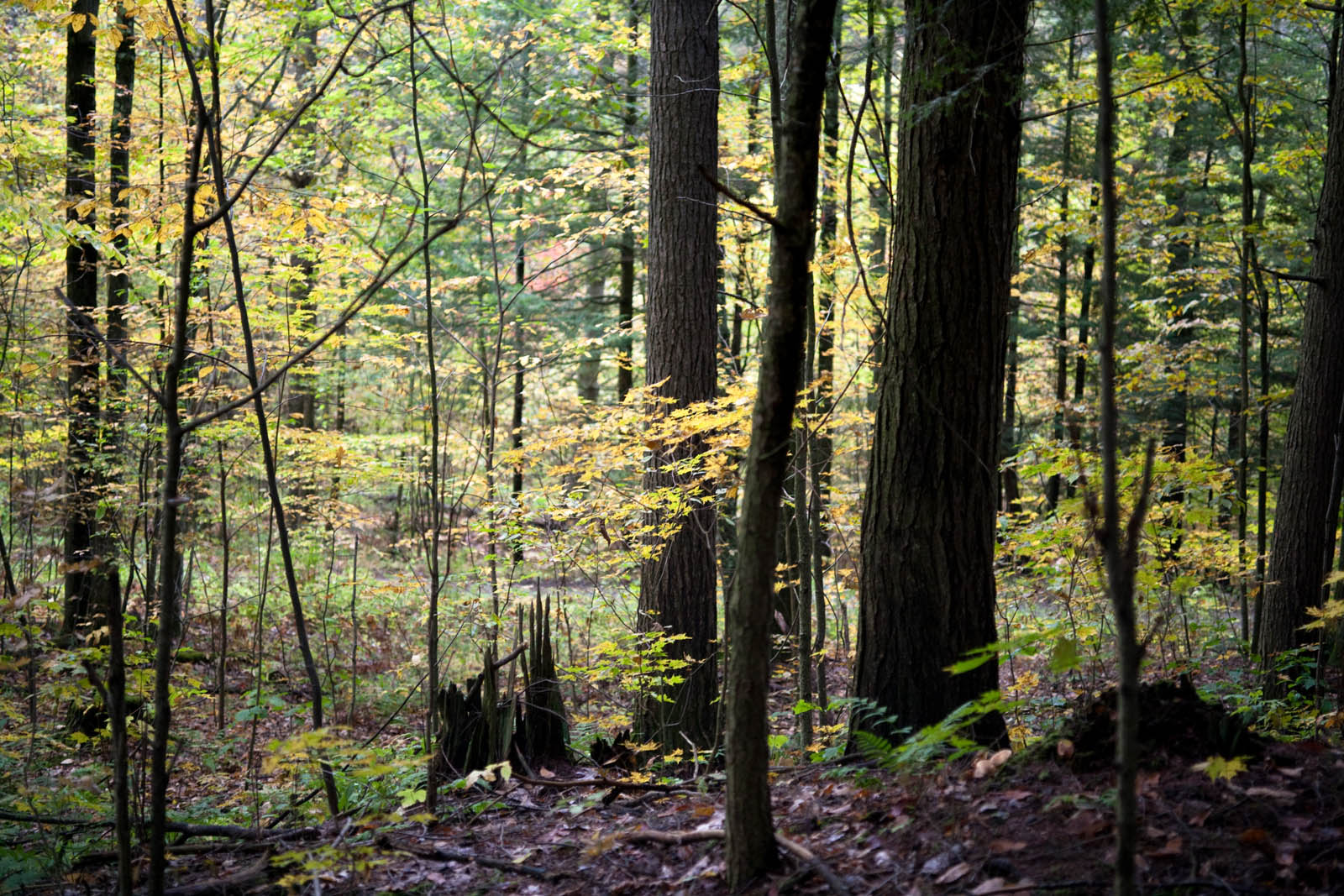
by David Brynn, VFF Executive Director and Conservation Forester
This week, the Vermont Agency of Natural Resources Climate Council held stakeholder meetings for forest landowners, forest products industries, and conservation organizations to offer feedback about the State’s proposed Climate Action Plan. Vermont Family Forests Executive Director David Brynn participated, and he submitted the following words to the public record.
My name is David Brynn.
I am the founder and executive director and licensed Vermont consulting forester with Vermont Family Forests, a 501c3 non-profit forest conservation organization located in Bristol, Vermont. VFF works primarily in Vermont’s Center-West Ecoregion which is an area bounded by the Winooski River to the north, the Mad River and Middlebury River watersheds to the east and south, and Lake Champlain to the west.
I worked for the Vermont Department of Forests, Parks and Recreation for 30 years as a nursery manager, tree improvement technician, state land forester and a county forester retiring in 2005.
I appreciate this opportunity to present today.
The climate crisis is bringing increasingly violent and unpredictable changes that are undermining the ecological integrity of Vermont’s forests.
We must change our ways and our relationships with our forests. There is no choice.
As ecological forester Stan Rowe pleaded in his Manifesto for the Earth, we must adopt an Earth-Centered world view to replace the human-centered world view that is pushing us over a cliff.
This means expanding our focus from forest resource management to forest ecosystem conservation and forest wildland reserve protection.
Vermont’s 40-plus year-old Use Value Appraisal Program is more essential than ever, and it must be continued, supported, and changed.
We should tax carbon emissions to fund UVA rather than taxing the healthy, intact forest lands that are the key to mitigating climate impacts.
Adding more forest ecosystem conservation and forest wildland protection through UVA is not a subsidy. It is a necessity. It is a mutually beneficial arrangement for the people and the planet.
Vermont puts too much emphasis on resource production and not enough emphasis on forest ecosystem conservation and protection. A healthy working landscape should include actively managed forests and actively conserved forests and actively protected wild forest reserves as well.
The government of the State of Vermont should focus less on timber production and procurement and much more on forest ecosystem conservation and forest wildland protection. Vermont has an opportunity to lead here.
Healthy, intact forests sequester and store the most atmospheric carbon, produce the highest quality water, provide habitat for the most diverse and abundant wildlife populations, and are the most flood and drought resilient of any land uses. Vermont must put forest health first now.
Wild, self-willed forests are excellent at storing carbon, producing water quality, protecting wildlife species diversity, and enhancing flood and drought resilience. In fact, they have been described by Aldo Leopold and others as “the base datum of normality, a picture of how healthy land works.”
Vermont should stop chipping and burning forest biomass to generate electricity. More of that wood should be left in the forest to rot, to slow, spread and sink storm flows, to provide key habitat, to hold base cations, and much more.
Sawmill residues should be used to produce high quality insulation materials as the Germans and Swiss do.
Forests include soil, plants, animals, water, and air.
There are three primary interests in forests: public, private, and Common.
Vermont’s forest plants and soils are primarily held by family forest owners or what we used to call NIPFs – non-industrial private forests.
Vermont’s water, wildlife, and air are unenclosed and are held in Common by the People. They are our ecological commons. The State of Vermont is Vermont’s Trustee of our ecological commons – water, wildlife, and air. But we the People hold the Ecological Commons.
Commoners and Citizen Scientists must take on more monitoring of the health of our ecological commons – atmospheric carbon, lentic and lotic waters, and wildlife species richness.
The climate is demanding these changes and more.
Let’s tap our States superb motto, FREEDOM AND UNITY, to guide us.
Most private family forest owners love their lands, and they ought to have more say on how their trees and their soils are managed, conserved, and protected. That is the Freedom part.
As Trustee, the Vermont State Government should focus more energy on protecting our ecological commons – water, wildlife, atmospheric carbon and flood and drought resilience – and actively support the People in monitoring our water, wildlife, and atmospheric carbon commons. That is the Unity part.
Freedom and Unity. We need a new World view that puts forest health first. The climate crisis is demanding this. Vermont must lead here.
Public interests, private interests, and Common ecological interests all must be at the Climate table and focusing on that which it is ideally suited to their particular interest.
Leave timber procurement to industry and let family forest owners pick their own crops and strategies. Leave Trusteeship to the Government. And Engage Commoners and Citizen Scientists in credible monitoring.
And open UVA to a wider variety of forest land uses that landowners want.
UVA should continue to include production forestry but more ecological forestry should be added and much more wildland forest reserves should be added to the mix.
As Trustee, the State of Vermont should take charge of improving the Acceptable Forest Management Practices, expanding Optimal Forest Conservation Practices, and adopting Exemplary Wildland Reserve Protection Practices.
Thank you.






